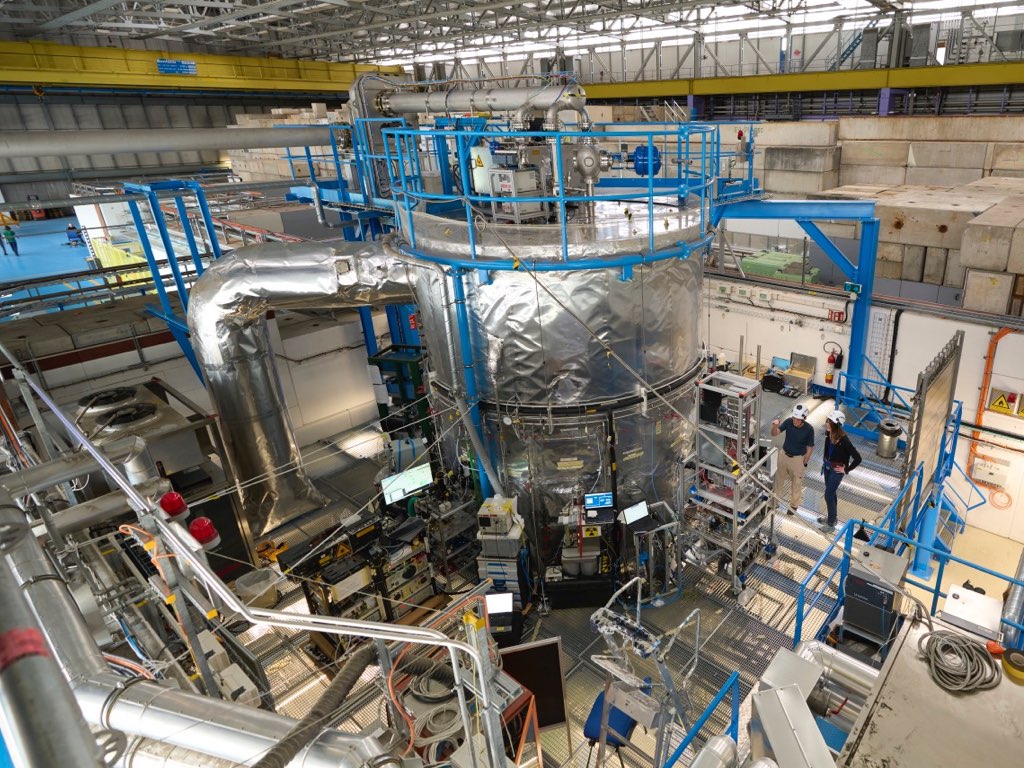CLOUD discovers new and efficient mechanism for high-altitude aerosol formation
"Aerosol particles can form and grow in the upper troposphere in unexpected ways, reports the CLOUD collaboration in a paper published today in Nature"

The resulting particles quickly spread around the globe, potentially influencing Earth's climate on an intercontinental scale.
The new mechanism may represent an important source of particles seeding cloud and ice formation in areas of the upper troposphere where ammonia is efficiently transported vertically, notably over the Asian monsoon regions.
Aerosol particles are known to generally cool the climate by reflecting sunlight. However, how new aerosol particles form in the atmosphere remains relatively poorly known.
"Newly formed aerosol particles are ubiquitous in the upper troposphere, but the vapors and mechanisms driving the formation of these particles are not well understood," explained Jasper Kirkby, coordinator of the CLOUD experiment. "With experiments conducted under cold upper tropospheric conditions in CERN's CLOUD chamber, we have discovered a new mechanism for extremely fast particle formation and growth, involving new mixtures of vapors."
Using mixtures of sulfuric acid, nitric acid, and ammonia vapors in the chamber at atmospheric concentrations, the CLOUD team found that these three compounds form new particles at rates much faster than those of any combination of two of the compounds (10-1000 times faster than the sulfuric acid-ammonia mixture that, in previous CLOUD results, was considered the dominant source of these particles). Once particles are formed from all three components, they can grow rapidly from the condensation of just nitric acid and ammonia, reaching sizes where they give rise to clouds. The CLOUD measurements also show that these particles are highly efficient in forming ice crystals, which are thought to play the main role in ice formation in the atmosphere.
The CLOUD researchers inserted the new results into global models that include the vertical transport of ammonia by convective clouds. The models showed that although aerosols form locally in ammonia-rich regions of the upper troposphere, they travel from Asia to North America in just three days through the subtropical jet stream, potentially influencing Earth's climate on an intercontinental scale.
"Our results will improve the reliability of global climate models in what concerns aerosol formation in the upper troposphere and in predicting how climate will change in the future," Kirkby said. "Once again, CLOUD is finding that anthropogenic ammonia has a major influence on atmospheric aerosols, and our studies will inform future policies for air pollution regulations."
Atmospheric concentrations of sulfuric acid, nitric acid, and ammonia were much lower in the pre-industrial era than they are today, and each is likely to follow different paths under future air pollution controls. Ammonia in the upper troposphere originates from livestock and fertilizer emissions - which are currently unregulated - and is transported upward in convective cloud droplets, which release ammonia as they freeze.
A small team of Portuguese researchers (from CENTRA and Instituto D. Liuz) integra a experiência CLOUD.
More info:
- Paper in Nature: https://www.nature.com/articles/s41586-022-04605-4
- News in the CERN page: https://home.cern/news/news/experiments/cloud-discovers-new-way-which-aerosols-rapidly-form-and-grow-high-altitude



